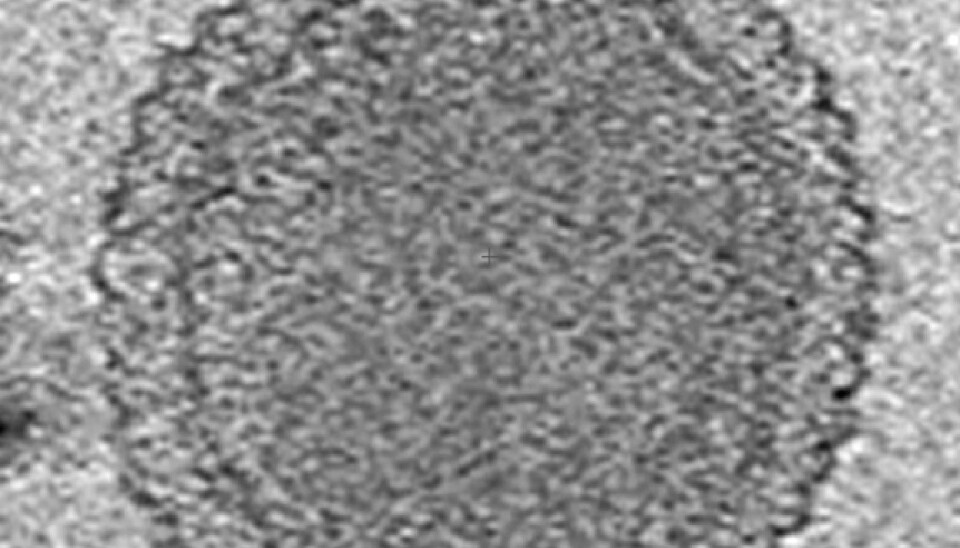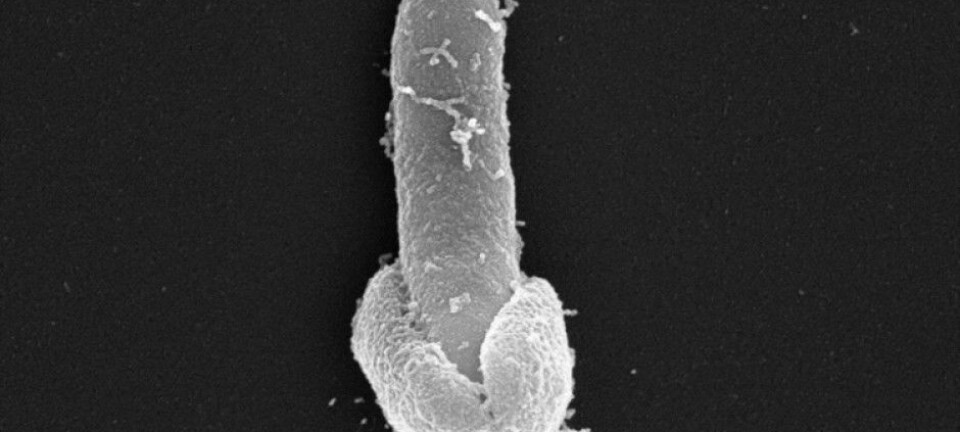An article from Norwegian SciTech News at NTNU

Scientists find smallest life forms on Earth
Researchers may have found the smallest life forms on Earth. The bacteria they found are much smaller than scientists thought possible.
Denne artikkelen er over ti år gammel og kan inneholde utdatert informasjon.
Over the last two decades, scientists have argued back and forth on whether or not ultra-small bacteria exist. The argument has been fueled, in part, by the 1996 find of ultra-tiny fossil microorganisms on a meteorite from the planet Mars.
But earlier this year, researchers at the University of California, Berkeley and the Department of Energy’s Lawrence Berkeley National Laboratory have captured detailed cryogenic electron microscopy images of ultra-small bacteria. These cells are now believed to be as small as a cell can get and still possess sufficient internal material needed to sustain life.
The first author of the study, Birgit Luef, is now a researcher at NTNU’s Department of Biotechnology. The publication was the result of her postdoctoral work at UC Berkeley.
The researchers found several kinds of bacteria from three microbial phyla that are poorly understood. The bacteria were in groundwater and are thought to be quite common. But what surprised Luef and her colleagues was that the bacteria were close to and in some cases smaller than what many scientists have long considered the lower size limit of life. They reported the findings in the spring in the journal Nature Communications.

The cells had an average volume 0.009 ± 0.002 cubic microns, meaning 150 of the bacteria would fit inside a single cell of Escherichia coli.
Need other microbes to survive
Luef believes that this research provides a significant step in characterizing the size, shape, and internal structure of ultra-small cells.
These bacteria had densely packed spirals that are probably DNA, a very small number of ribosomes, hair-like appendages, and a stripped-down metabolism that likely requires them to rely on other bacteria for many of life’s necessities.
Cryo-transmission electron microscopy captured numerous hairlike appendages radiating from the surface of this ultra-small bacteria cell. The scientists theorize the pili-like structures enable the cell to connect with other microbes and obtain life-giving resources.
These newly described ultra-small bacteria are an example of a subset of the microbial life on Earth that almost nothing is known about.
Thirty-five new groups
Recently, University of California, Berkeley, scientists have identified more than 35 new groups of bacteria after sequencing about 800 largely unknown bacteria genomes in groundwater, clarifying a mysterious branch of the tree of life including the smallest life forms on Earth.
The ultra-small bacteria are detected in many environments and they probably play important roles in microbial communities and ecosystems although we do not yet fully understand what these ultra-small bacteria do.
“This study has gotten quite a lot of attention internationally,” said Professor Olav Vadstein, from NTNU’s Department of Biotechnology. “It has been a real eye-opener for me — both that these bacteria exist, and in such great numbers. It shows that microbial ecology is one of the biological disciplines that is expands most rapidly right now, which is part of what makes it fun to work in the discipline.”
-------------------------------------
Read the Norwegian version of this article at forskning.no
Scientific links
- Birgit Luef et al: Diverse uncultivated ultra-small bacterial cells in groundwater. Nature Communications, 2015. doi:10.1038/ncomms7372.
- Christopher T. Brown et al: Unusual biology across a group comprising more than 15% of domain Bacteria. Nature, 2015. doi:10.1038/nature14486



































